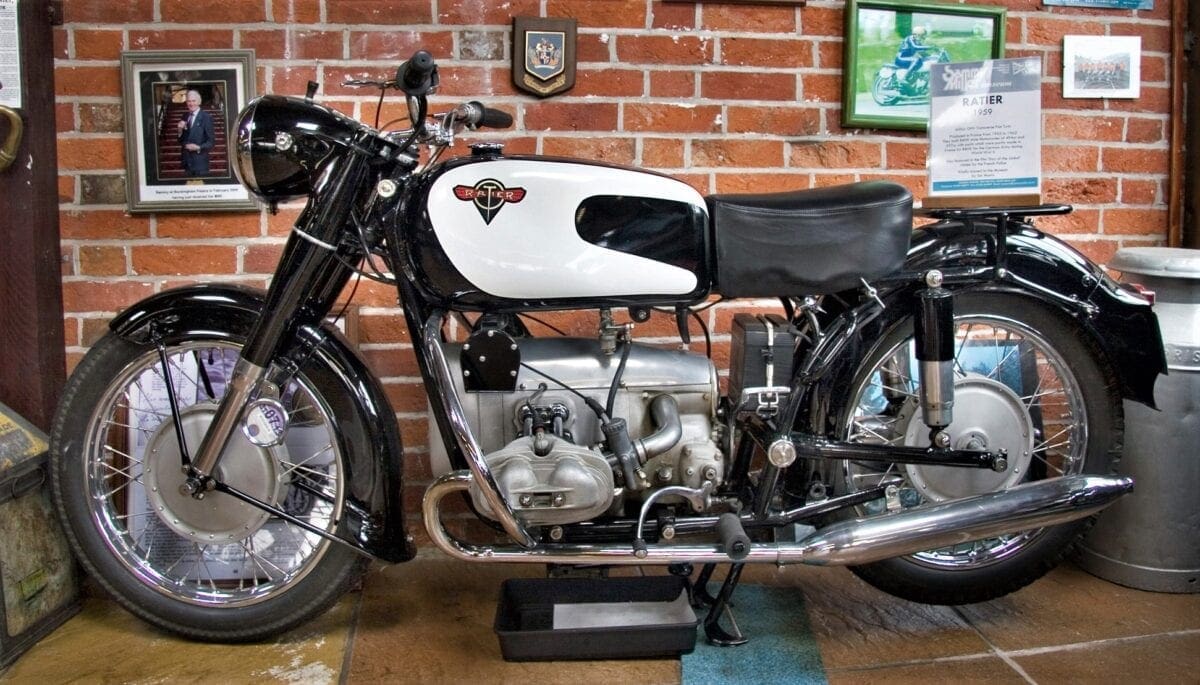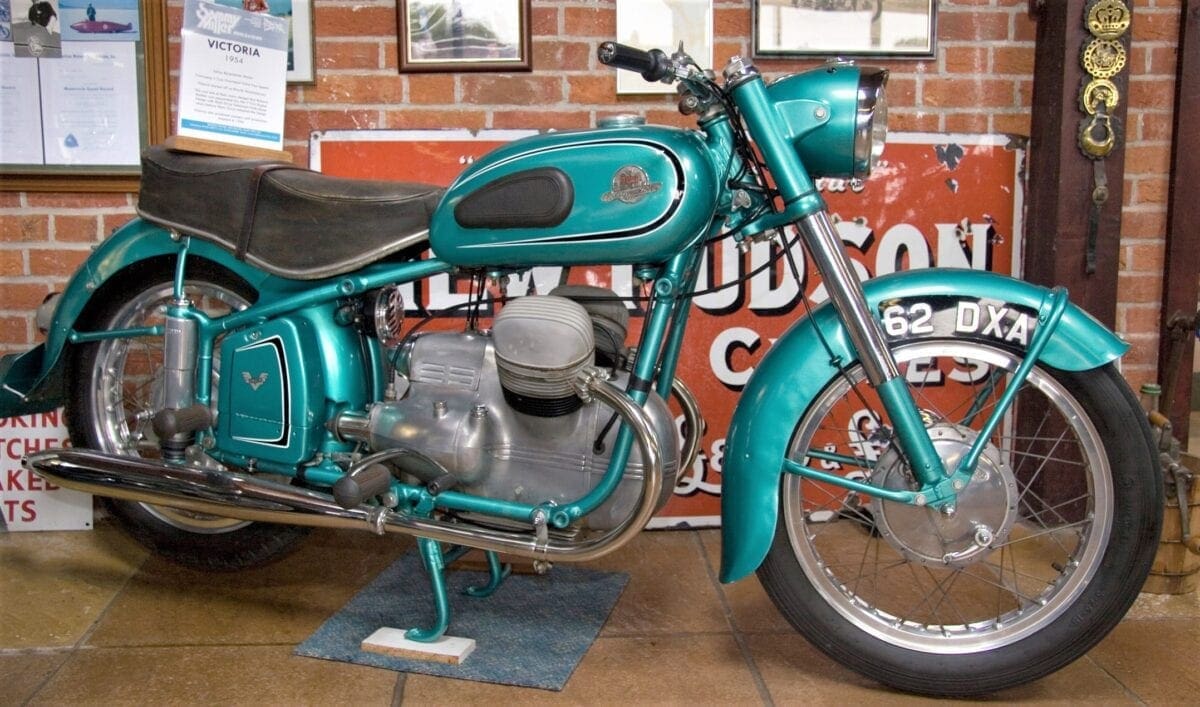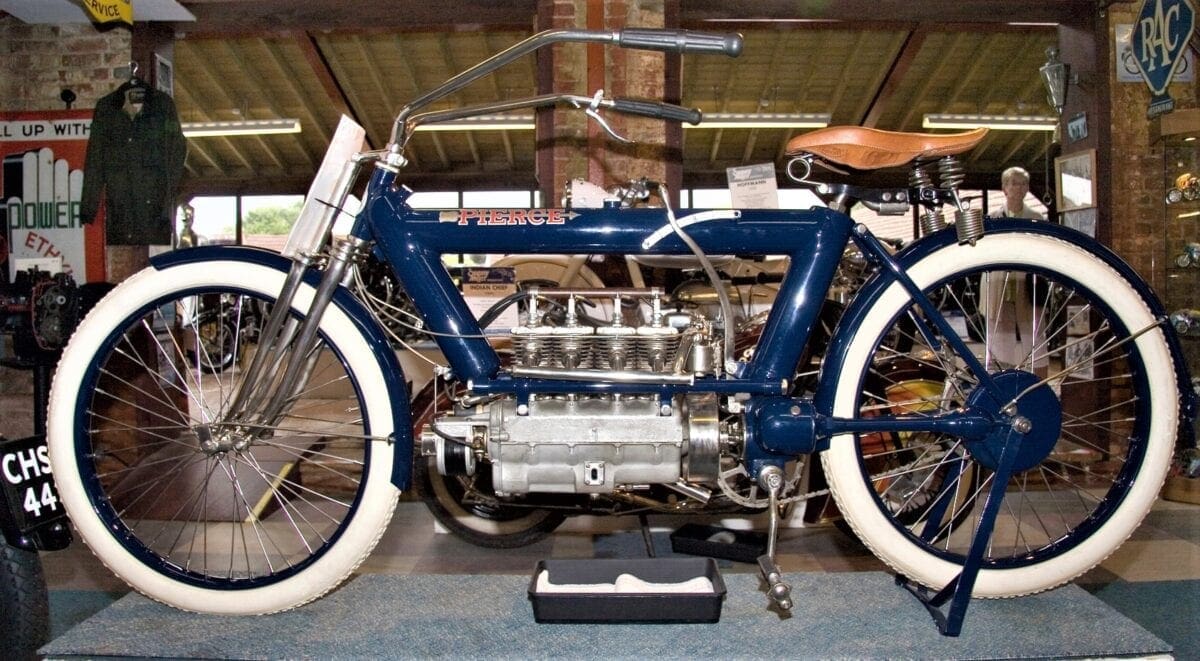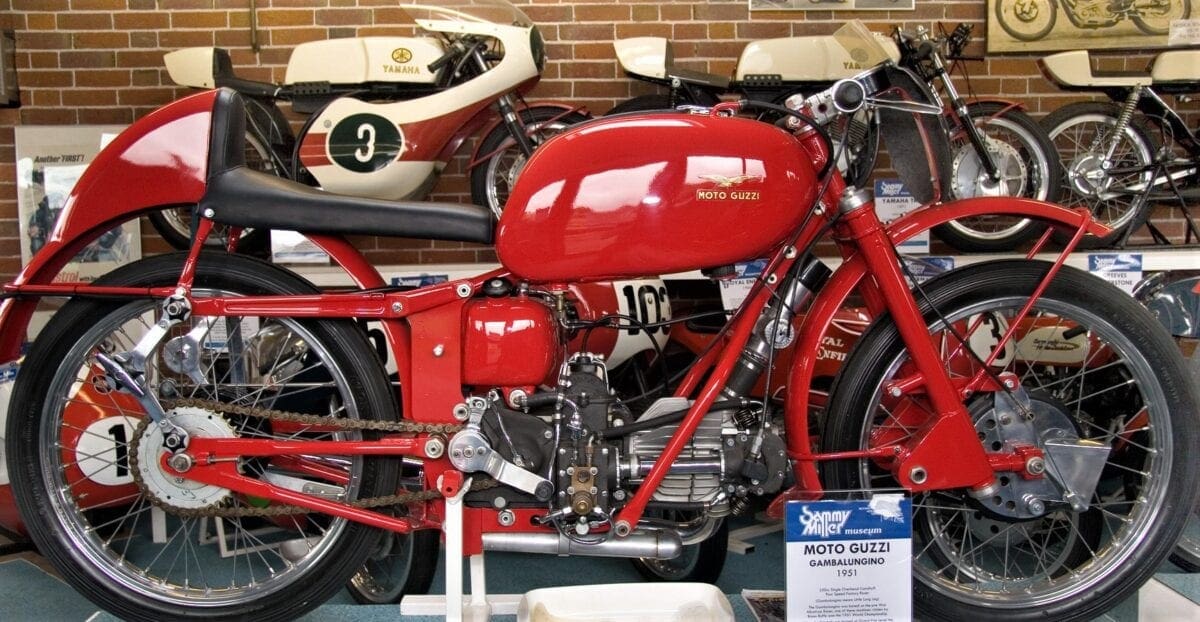The Sammy Miller museum doesn’t restrict itself to British bikes, but also hosts many exotic machines from overseas. Richard Jones reveals some of these extra-special classic motorcycles which you’ll find on display at Bashley Manor – once, of course, legal restrictions are lifted. The museum hopes to host a series of ride-ins during 2021 with featured marques parking on the hard-standing courtyard, display halls open and the tea rooms offering refreshments before your ride home!

A French company called Cemec built motorcycles with parts that had been manufactured for the German military during WW2. Unsurprisingly the 746cc sidevalve flat twins looked astonishingly like BMWs. Production was suspended until 1955 and then marketed under the Ratier brand. 500 and 600 ohv models were produced along with a 750 sidevalve. Ratier were popular with the French police and President de Gaulle preferred them for escort duties. As a result, they appear in the film, The Day of the Jackal. This is a 1959 600, on loan from Ian Munro.
Max Frankenburger and Max Ottenstein founded Victoria Werke AG in 1899 and started manufacturing motorcycles from 1901. In 1920 they unveiled a 493cc fore-and-aft flat twin with a BMW engine, after which there was no stopping them. The 8bhp KR2 led to the 62mph KR4 three years later and there was even a racing machine that year which, in supercharged format, could easily exceed 100mph.

Although there was flirtation with Sachs and Sturmey Archer engines in the late 1920s and early 1930s, Victoria stuck with their signature flat twins which included the KR6, top-of-the-range model, the 596cc Bergmeister which became popular with the German military. Despite being badly damaged during WW2, the factory was back in production post-war and in 1956 unveiled the landmark 345cc, V-twin, shaft drive Bergmeister which is the year this example in the museum was manufactured. Two years later Victoria amalgamated with DKW, focusing its efforts on smaller 50cc mopeds before disappearing in 1966.
Husqvarna are probably best known for their two-stroke motocross machines but back in about 1930, after a dalliance with JAP and Sturmey Archer engines, the marque produced a new, in-house 500 motor which was a pushrod operated V-twin. The 44bhp produced at 6800rpm translated into 120mph, which enabled Swedish riders to win their home grand prix for three years on the run from 1932.

After their star rider was killed in an accident, Husqvarna turned to Stanley Woods who gave them their fourth victory in 1935. They had less success in the TT with a succession of DNFs although in 1934 Ernie Nott, whilst not finishing in the Senior, did come third in the Lightweight aboard a smaller Husqvarna. The museum’s example dates from 1935.
There are a number of machines from the other side of the Atlantic on display but perhaps one of the rarer examples is this 1911 Pierce with its 688cc engine. It appears to owe much to the four-cylinder inline engine manufactured by FN in Belgium. George N Pierce started his career in manufacturing by producing squirrel and bird cages in 1865 in Buffalo but by 1899 he had produced his first, albeit unsuccessful, steam car. More cars followed and then in 1909 the first Pierce motorcycle made its appearance with its tubular frame providing a home for petrol in the top tube and oil in the front down tube.

Like the FN, the Pierce featured shaft drive and in 1910 it gained a multiplate clutch and two-speed transmission. The focus was on quality rather than price and, at a time when the average annual take home pay was $750, the Pierce 4 would set you back $400. Unsurprisingly Pierce stopped manufacturing motorcycles in 1913 and concentrated on cars until it all ended in 1938. As a result these are somewhat rare and rather expensive – Bonhams sold one at Stafford years ago for £54,300 – so start saving now if you want one of these whitewall tyre wonders.
Let’s finish this short romp through the museum with something red, Italian and beautiful – this 1951 Moto Guzzi Gambalunghino 250cc racing machine. The smaller brother of the 500cc Gambalunga – Long Leg – this quarter cylinder single was inevitably known as ‘Little Long Leg’. With an output of 28bhp and a top speed of over 100mph it was anything but little in character. It featured an outside flywheel and friction dampers on the rear suspension.

While this may have looked a trifle old fashioned it didn’t stop the machine from winning. Works rider Bruno Ruffo rode the Gambalunghino to win the 1949 and 1951 world championships, and Enrico Lorenzetti rode it to the 1952 championship whilst Leicestershire’s own Maurice Cann won the 1948 Lightweight TT riding one.
If you’ve enjoyed this whirlwind tour (and the first part) of a few of the museum’s machines, I can definitely recommend making the trip to Hampshire to enjoy a visit – as soon as circumstances allow!
——-
Words and photos: Richard Jones
There are more of Richard’s reports and photos at www.flickr.com/photos/cerrig_photography/sets/




